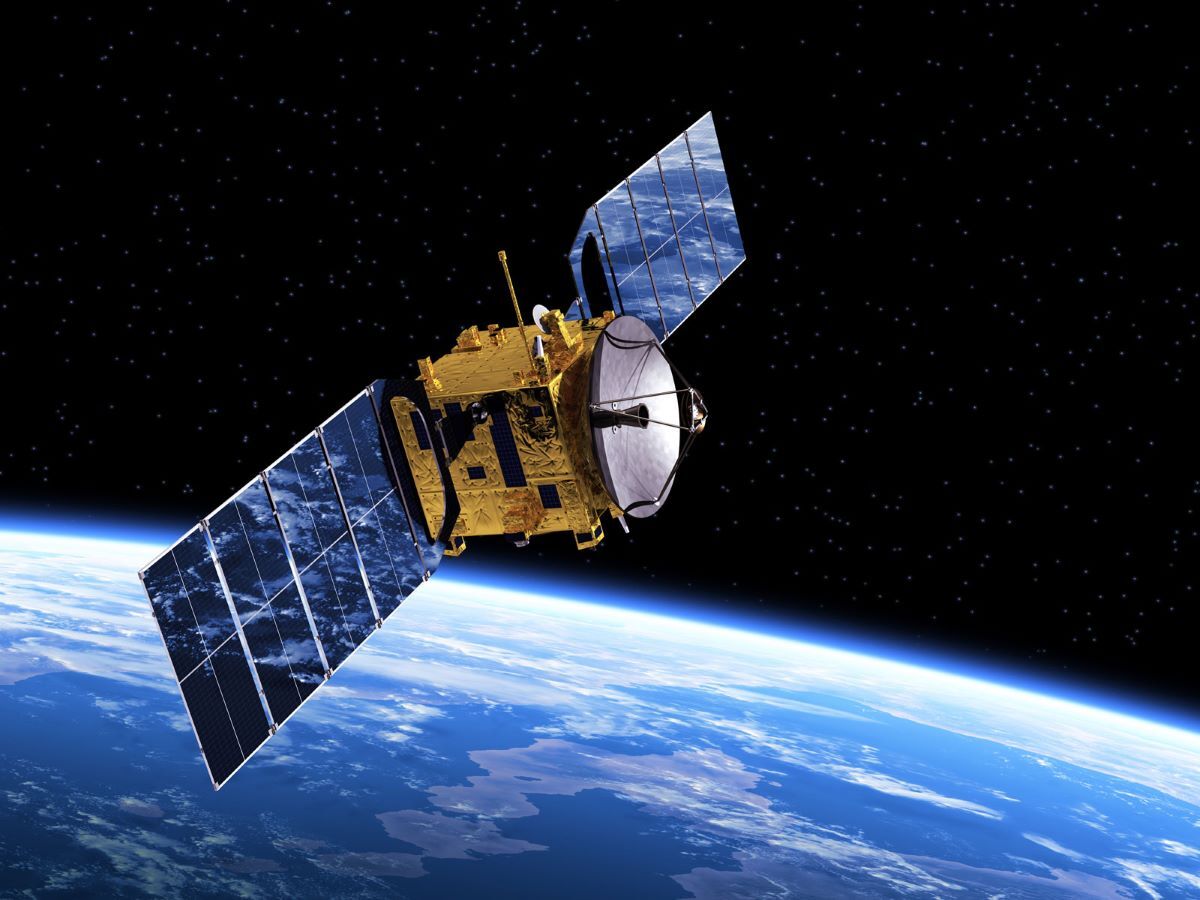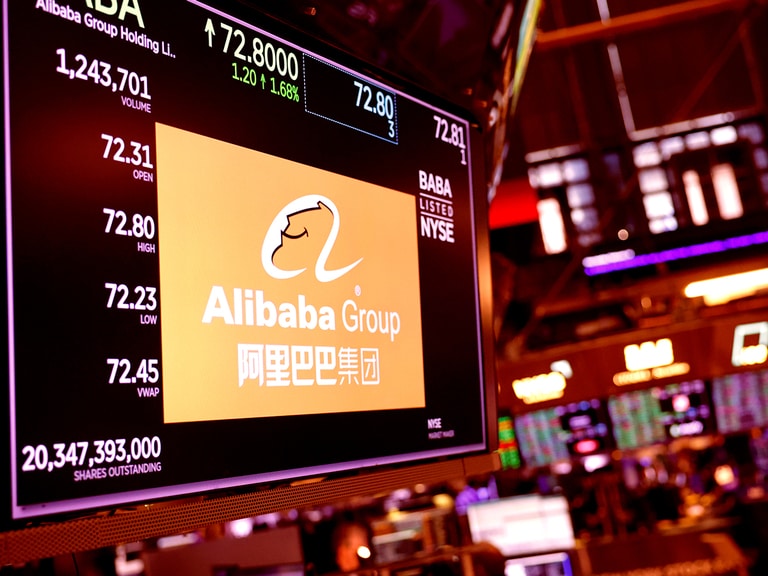The space theme is a fast-expanding universe of economic opportunities. While SpaceX leads the launch market, it is being challenged both by smaller incumbents and by larger, diversified aerospace companies as the frontiers of space exploration are pushed ever further.
- Space industry could be worth $1.8trn by 2035, says McKinsey.
- Quilty Space: technological advances are unlocking new markets.
- ARK Space Exploration and Innovation ETF gains 4% in past 12 months.
Rocket Fuelling Innovation
The space sector impacts on many areas of daily life.
As of 19 June, 10,019 satellites orbit the earth, according to French start-up Look Up Space, providing earthlings with a range of services they increasingly take for granted, from internet connectivity to GPS.
Then there is the burgeoning space economy which harnesses the unique properties of low- or zero-gravity to synthesise proteins that can’t be produced on earth. Elsewhere, there is a growing industry around the need to 3D print objects in space for maintenance of the growing super-atmospheric fleet.
“Over the past five years, plummeting costs have fuelled a surge of start-up activity and innovation,” Chris Quilty, Co-CEO and President of business intelligence firm Quilty Space, told OPTO.
Strategy consultancy McKinsey estimates that the size of the space industry will increase from $630bn in 2023 to $1.8trn by 2035.
SpaceX is one of the best-known companies in this industry. In 2022, the company, founded by Tesla [TSLA] CEO Elon Musk as part of his vision of establishing a human colony on Mars, accounted for 33% of satellite launches globally. SpaceX’s satellites represent some 50% of the total in orbit.
As well as the makers of space rockets such as SpaceX, the space industry is populated by the makers of satellites — for example Planet Labs [PL] and Viasat [VSAT]. The space theme is also characterised by its mix of large, diversified players, such as Airbus[AIR:PA] and Boeing [BA], and smaller specialists like Rocket Lab [RKLB] and EchoStar [SATS].
Megaconstellations
SpaceX in particular has been instrumental in demonstrating the commercial viability of the space launch industry, and is fast making the delivery of payloads into orbit — especially satellites — a routine occurrence. Its Starlink ‘megaconstellation’ consists of over 6,000 satellites; on 8 June, a Falcon 9 rocket delivered 20 new additions in a single flight.
Much of SpaceX’s income comes from government contracts; in 2023, Quartz cited US government records putting the company’s total government payout at $15.3bn since 2003. The US has become heavily dependent on Starlink. It uses the network to launch some of its most sensitive satellites. Tensions arose between the company and the Pentagon when Musk tried to reduce the Ukrainian military’s access to Starlink during Russia’s invasion in 2022.
However, Bloomberg reported in June that the Pentagon has extended the partnership with Starlink in Ukraine by six months until 30 November, a sign that the dispute could be over. The extension will cost the US Space Force $14.1m.
Hoping to tread on SpaceX’s toes is launch firm Rocket Lab. The company’s shares jumped 11% on 18 June following news of a deal with Synspective, an Earth observation company based in Japan, to launch 10 satellites between 2025 and 2027.
As they are for SpaceX, government contracts are an important source of revenue for Rocket Lab; its Founder and CEO Peter Beck told OPTO Sessions in April that he aims for a 50/50 split between government and commercial revenue over the next two years.
In Orbit, Around the World
SpaceX’s business is also attracting competition from bigger players. Amazon [AMZN] operates satellite arm Project Kuiper, an initiative to increase global broadband access through a constellation of 3,236 satellites. Founder Jeff Bezos launched space tourism company Blue Origin, which supports the project with launches, as do SpaceX, Arianespace and United Launch Alliance.
Kuiper’s objective is to provide connectivity to those who are underserved. In a collaboration with Vrio, it is challenging Starlink with a series of satellite launches that will provide internet access in Argentina, Brazil, Chile, Uruguay, Peru, Ecuador and Colombia.
Approximately 200 million people have poor, little or no internet access in South America, according to Lucas Werthein, Vice President of Vrio, speaking to Reuters.
Jio Platforms — a subsidiary of Reliance Industries [RELIANCE:NS] — is also moving in on the act.
Orbit Connect India, Jio’s joint venture with satellite maker SES [SESG:PA], was granted approval from India’s space regulator to provide gigabit fibre internet in the country in June. Reliance already has India’s largest telecoms network, and the new network, dubbed JioSpaceFiber, will be offered to small businesses as Jio focuses on expanding India’s broadband access, the Financial Times detailed.
We Have a Problem
According to Quilty, innovation in the space economy is being driven by regulatory, climate and defence imperatives. “Higher resolution imagery, rapid revisit rates and a variety of new sensors, such as hyperspectral, lidar and thermal… have the potential to unlock new markets and applications, significantly propelling the industry’s growth,” he said.
Quilty cites Airbus as one of the key players in this innovation. However, the company issued a guidance update on 24 June that acknowledged charges of approximately €0.9bn for its space systems division, related to “further commercial and technical challenges” identified during a review of its programmes.
“These are mainly related to updated assumptions on schedules, workload, sourcing, risks and costs over the lifetime of certain telecommunications, navigation and observation programmes,” the company stated.
Airbus’ most direct aerospace competitor is also experiencing difficulties with its space division. Boeing’s Starliner mission has suffered a string of repeated delays in June, stranding two NASA astronauts at the International Space Station (ISS).
NASA has attributed the delays to an investigation into four unexpected helium leaks that were detected once the Starliner spacecraft was in orbit, as well as thruster malfunctions that delayed its final approach to the ISS. Though not expected to threaten the astronauts’ safety, the technical issues present a challenge to the flight’s mission of demonstrating Starliner’s ability to ferry astronauts safely to the ISS. Originally scheduled to return on 14 June, Starliner currently has no scheduled return date.
Boeing’s share price closed down 1.9% on 14 June, and is down 32.8% year-to-date.
How to Invest in Space Stocks
The ARK Space Exploration and Innovation ETF [ARKX] is an actively managed fund that invests in companies involved in space exploration and innovation.
Amazon is the fund’s eighth-biggest holding with a 3.8% weighting as of 26 June, while Rocket Lab is 10th at 3.3% and Airbus has a weighting of 1.2%. ARKX is up 4.1% in the 12 months to 25 June and down 3.7% year-to-date.
Airbus shares are up 6.2% in the past 12 months but down 3% year-to-date. Over the respective periods, Amazon’s are up 46.3% and 22.6%, Rocket Lab’s are down 11.7% and 14.3%, and Boeing’s shares are down 14.8% and 32.8%.
Continue reading for FREE
- Includes free newsletter updates, unsubscribe anytime. Privacy policy






